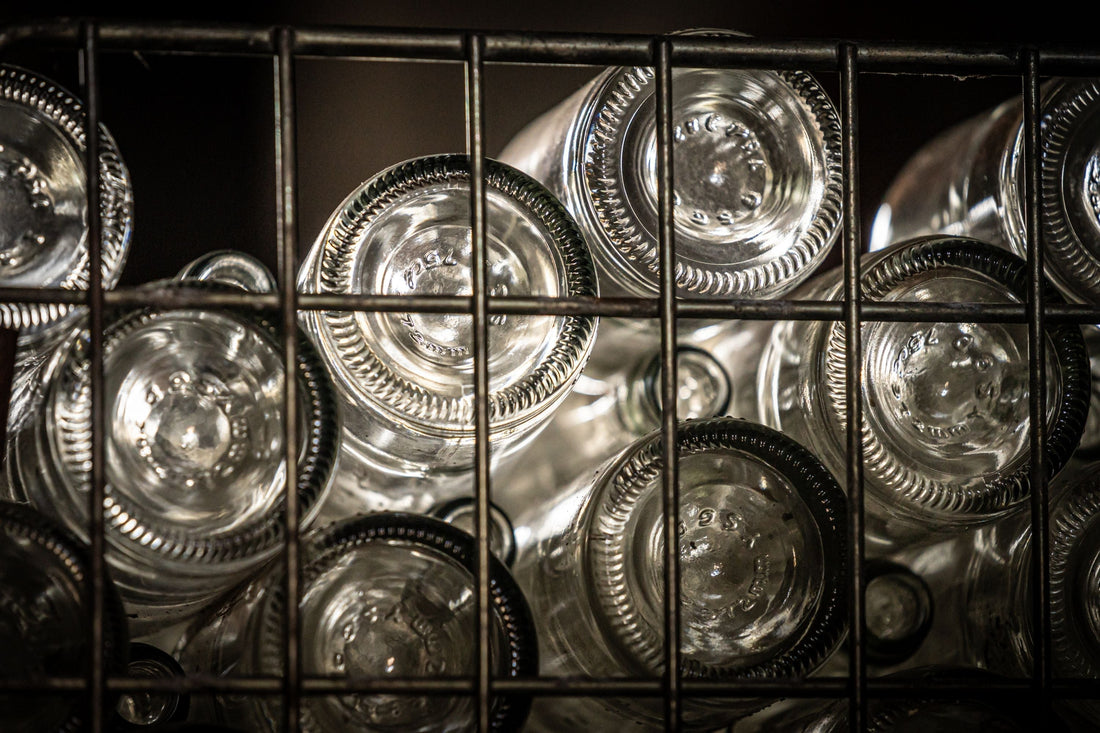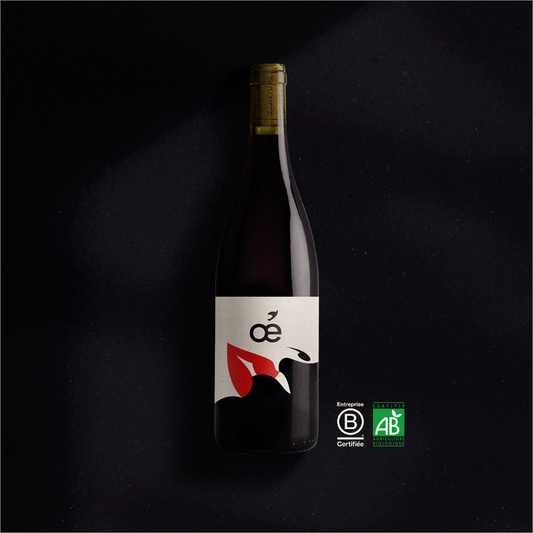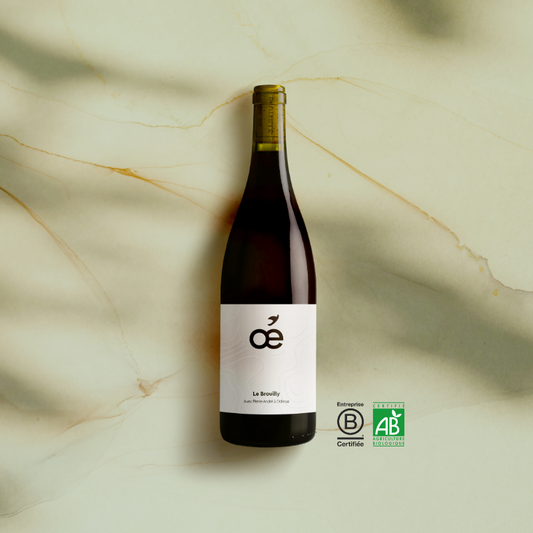"Recycling is not enough. Until consumers truly understand why, they will keep throwing bottles away."
At Oé, we’ve embraced reuse as a cornerstone of our commitment to sustainability. By pioneering systems that prioritize reusable bottles and local supply chains, we’re not only reducing our environmental impact. We're inspiring a broader movement within the wine industry. Our approach aligns closely with the reuse revolution taking place across the beverage sector. We're roving that standardization and localization are not just ideals ; they’re achievable and scalable solutions. As the climate crisis accelerates, stories like ours highlight the power of collective action to drive meaningful change.
As the climate crisis escalates, industries worldwide are reassessing their supply chains and production models. Among these, the beverage industry stands at a crossroads: adapt to reuse systems or continue down the path of single-use packaging.
Reuse offers a transformative opportunity, reducing waste, cutting emissions, and fostering sustainability. But to make this transition successful, producers must focus on two critical pillars: standardized bottles and localized supply chains. Let’s explore why these are essential and how they can drive a reuse revolution.

The Need for Standardized Bottles: A Game-Changer for Reuse
One of the primary barriers to reuse is the complexity created by a variety of bottle designs, shapes, and sizes. Standardizing bottles can unlock efficiencies at every stage of the reuse process, from collection to cleaning and redistribution. By adopting a few universal formats, producers can:
-
Simplify Logistics: Standardized bottles streamline collection and cleaning processes, enabling economies of scale. Facilities can process larger volumes of bottles without needing to separate by brand or design.
-
Boost Consumer Adoption: When consumers recognize and trust reusable bottles, they are more likely to return them. A uniform design fosters familiarity, which translates to higher participation in reuse programs.
-
Enhance Cost-Effectiveness: Uniformity reduces the costs associated with managing diverse bottle types, from sorting to specialized machinery.

The Wine Industry is Embracing Bottle Reuse
Inspired by the returnable milk bottle model, the wine industry is shifting toward reusable glass bottles to reduce waste, energy use, and single-use packaging. With the right infrastructure and consumer engagement, bottle reuse can significantly improve the sustainability of wine packaging.
Characteristics of Reusable Bottles
-
Made from the same materials as single-use glass bottles.
-
Can withstand at least 20 washing and sterilization cycles.
-
Reusing a bottle 20 times results in:
-
80% reduction in carbon emissions.
-
99% reduction in raw material usage.
-
60% reduction in water and energy consumption.
-
Effective reuse depends on local collection and logistics and requires consumer participation to return bottles.
Standardization doesn’t mean sacrificing brand identity. Producers can maintain unique labels and caps while using a common bottle shape. This balance ensures brand differentiation while supporting a more sustainable system. Moreover, the benefits of reuse are even greater in the US because only 30% is recycled and the rest is landfilled.
Innovation in sustainable wine packaging reshapes the industry
-
Returnable & Refillable Glass Systems
Reusable glass wine bottles are durable for dozens of refill cycles with rigorous washing to meet food-grade standards. These bottles cut carbon emissions by up to ~85% compared to single-use bottles and break even on emissions after just a few reuses, thanks to closed-loop logistics. -
Lightweight Glass and Alternative Formats
Innovations include thinner, lighter glass bottles (e.g., going from 750 g to as low as 350 g), which significantly reduce transportation emissions. Other options like Bag-in-Box, aluminum cans, and even flat PET or paper-based bottles (like Packamama or Garçon Wines) are gaining traction — each offering lower carbon footprints and packaging efficiencies. -
Technology & Consumer Engagement
Smart packaging trends—QR codes, NFC, and AR—allow consumers to trace the product's origin, learn about sustainability practices, or engage with brand stories via their phones. This deepens brand connection and transparency. -
Meeting Consumer Demand & Policy Trends
Millennials and Gen Z increasingly demand sustainability; surveys show 75% favor brands with environmental commitments. Meanwhile, regulatory pressures and corporate carbon targets are driving the adoption of these eco-friendly packaging formats to meet emission and recycling goals.
If you are curious to learn more about it, feel free to read Revino's blog post here!
Localized Supply Chains: The Backbone of Sustainable Reuse
A localized supply chain is the unsung hero of successful reuse systems. By prioritizing regional production, collection, and processing, producers can achieve several benefits:
-
Lower Carbon Footprints: Localized supply chains cut down on emissions associated with transporting bottles over long distances. Each kilometer saved in transport translates to a tangible reduction in greenhouse gas emissions.
-
Strengthen Regional Economies: Investing in local cleaning and processing facilities creates jobs and supports local economies. This approach also ensures resilience in the face of global supply chain disruptions.
-
Faster Turnaround: With local facilities, bottles can be collected, cleaned, and returned to shelves more quickly, minimizing delays and inefficiencies.
Localized systems, paired with standardized bottles, enable the creation of closed-loop systems where bottles are reused within a specific region. This model not only reduces environmental impact but also builds trust with consumers who value transparency and local impact.
Reuse as a Climate Solution
The environmental benefits of reuse are undeniable. A single reusable bottle can replace dozens of single-use bottles, dramatically reducing waste. But the climate advantages extend far beyond waste reduction:
-
Reduced Emissions: Reusing bottles requires significantly less energy compared to producing new ones. Cleaning a bottle emits far fewer greenhouse gases than manufacturing a new one from raw materials.
Reusing 12 bottles enables you to save 10lbs CO2e—equivalent to 70 hours of streaming. Reusing 12 bottles shipped with a sailboat enables you to save 15lbs CO2e—equivalent to 107 hours of streaming.
-
Conservation of Resources: Reuse reduces the demand for raw materials like sand, used in glass production, and petroleum, used in plastic. This conservation mitigates environmental degradation and resource depletion.
-
Catalyst for Systemic Change: By embracing reuse, the beverage industry sets a precedent for other sectors to follow, accelerating the shift to a circular economy.
Benefits of Bottle Reuse:
-
Environmental: Lower carbon footprint since single-use glass bottles are a major contributor to emissions.
-
Economic: Saves costs on bottling, packaging, warehousing, and distribution.
-
Customer Loyalty: Encourages repeat purchases through branded refillable bottles.
-
Minimal Investment: An easy-to-implement system for wineries, particularly at tasting rooms and events.
-
Consumer Preference:
-
A winery tested offering 1L refillable bottles at the same price as traditional 750ml corked bottles (since they saved on packaging).
-
Customers overwhelmingly preferred the 1L refillable bottles, proving they were paying for the wine, not the packaging.
Getting Reuse Ready: What Producers Can Do
For producers, the transition to reuse requires thoughtful planning and collaboration. Here are key steps to take:
-
Adopt Standardized Bottles: Work with industry peers to agree on a set of bottle formats. This collective approach benefits everyone in the ecosystem.
-
Invest in Local Infrastructure: Support the development of regional collection, cleaning, and redistribution facilities. Partner with local stakeholders to build robust networks.
-
Educate Consumers: Raise awareness about the benefits of reuse and the role consumers play in returning bottles. Transparency and engagement drive participation.
-
Collaborate Across Sectors: Work with governments, NGOs, and industry associations to create policies and incentives that support reuse systems.
Recommended Actions:
-
Choose a used bottle over a new one.
-
Implement collection systems at wineries, tasting rooms, or join regional reuse networks.
-
Optimize cleaning processes by using non-toxic, biodegradable cleaning agents.
-
Ensure packaging is reuse-friendly by:
-
Avoiding embossing or screen printing for easier cleaning.
-
Using removable labels and avoiding wax seals or non-recyclable closures.
-
Avoiding aluminum screw caps, which complicate reuse.
Key Players in Reusable Wine Bottles
-
Several wineries and organizations are pioneering bottle reuse, including Oé, Sustainable Wine Solutions, La Bande Verte, Boutey, Maison Chapoutier, and others.
-
Revino (Oregon) has gone further by getting its reusable bottle certified by a glass manufacturer.
-
La Bande Verte (France) is launching a marketplace for reused wine bottles to facilitate adoption.

Successful Reuse Schemes in Other Countries
🇨🇦 Canada – Bottle Returns as Everyday Culture
Canada has a well‑established deposit-return system—Ontario’s Beer Store, for example, achieves a 97% return rate, with refillable beer bottles reused at least 15 times. Startups like Circulr are introducing reverse‑vending machines that can sort, wash, and return standard wine bottles, creating efficient local loops
🇫🇷 France – Reuse Driven by Policy
French legislation (AGEC & Climate Resilience laws) targets 10% reusable packaging by 2027 and encourages hybrid models: reusable glass at home or dine-in, with recycling for on-the-go. Companies like Uzaje offer logistics and washing services to support supermarkets and producers.
🇧🇷 Brazil – Reuse at National Scale
Major beverage players in Brazil demonstrate scalable reuse systems: Cia Muller delivers 10 million returnable glass bottles monthly through a closed-loop logistics chain. Coca‑Cola Brazil invested hundreds of millions to create reusable PET bottles reusable up to 50 times and incentivizes returns with discounts. These national-scale models prove reuse can be economically powerful.
Key Takeaways:
- Infrastructure matters: accessible collection, washing, and redistribution systems are essential.
- Policy and incentives: deposit-return laws and reusable packaging targets significantly boost adoption.
- Glass excels: it’s durable, recyclable, and culturally familiar—perfect for reusable systems.
All these datas come from our partner Revino, feel free to read more here!
Challenges to Overcome
-
Different bottle formats complicate reuse.
-
Mechanization issues in the cleaning and refilling process.
-
Difficulties removing labels and capsules.
-
Bottle weight varies, making handling less standardized.
-
Need for advanced sanitation technology for bottle cleaning.
-
Consumer education is crucial—customers must be willing to return bottles instead of disposing of them.
Why Refillable Bottles Matter
At Oé, we believe that every small gesture can lead to big change. Reuse isn’t just a nice idea. It’s one of the most powerful ways we can care for the planet. When it comes to wine packaging, reusable glass bottles are an inspiring and tangible way to reduce our environmental footprint without compromising the joy of a good glass of wine.
Why Reuse?
Reusable bottles are made from the same glass as single-use ones, but they’re designed to be washed and used again and again, at least 20 times. That’s 20 fewer bottles produced, transported, and recycled. Just imagine the impact:
• Up to 80% fewer carbon emissions
• 99% less raw material used
• 60% savings in energy and water
It’s simple, circular, and it works.
The Reuse Loop in Action
Building a reuse system means thinking locally and collectively. Whether it’s collecting bottles directly from wine shops and tasting rooms or working hand-in-hand with logistics partners and reuse networks, the key is connection. Community is what makes reuse truly possible.
And yes, consumers (that’s all of us!) are a vital part of this loop. It only works if bottles make their way back. That’s why education, trust, and simplicity are essential.
Is Reuse Better Than Recycling?
Short answer: yes, most of the time. Recycling is important, but it’s not perfect. Materials degrade, energy is still required, and waste happens. Reuse, on the other hand, keeps bottles in the loop longer, with less impact. Of course, there are emissions from washing and transport, but the overall savings are worth it.
A Real-World Example
One case study we loved: a reuse pilot at the London Wine Fair. Thousands of bottles were collected, sorted, and reimagined for their next life. The project showed that reuse is not only possible, it’s scalable. It just takes intention, collaboration, and a shared belief in doing better.
A Future Built on Reuse
The shift to reuse isn’t just an environmental imperative; it’s a business opportunity. Standardized bottles and localized supply chains offer a blueprint for a more efficient, sustainable, and resilient industry. By embracing these principles, producers can reduce costs, enhance consumer trust, and lead the fight against climate change. The time to act is now, because a reuse-ready future benefits us all.
At Oé, we’re proud to be part of this movement, rethinking packaging and proving that reuse can be beautiful, practical, and sustainable. The bottle you return today might be the one we fill with joy tomorrow.





